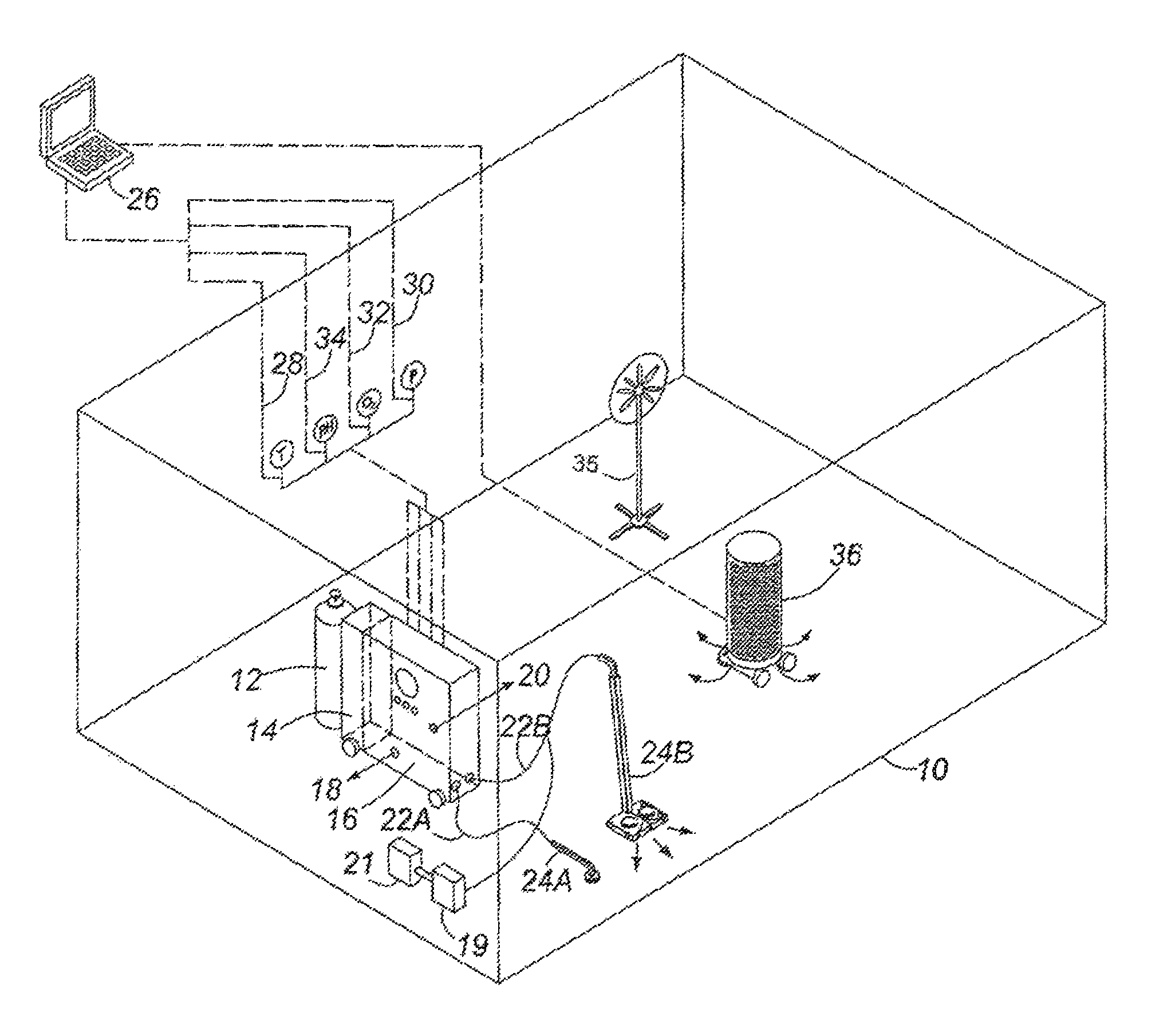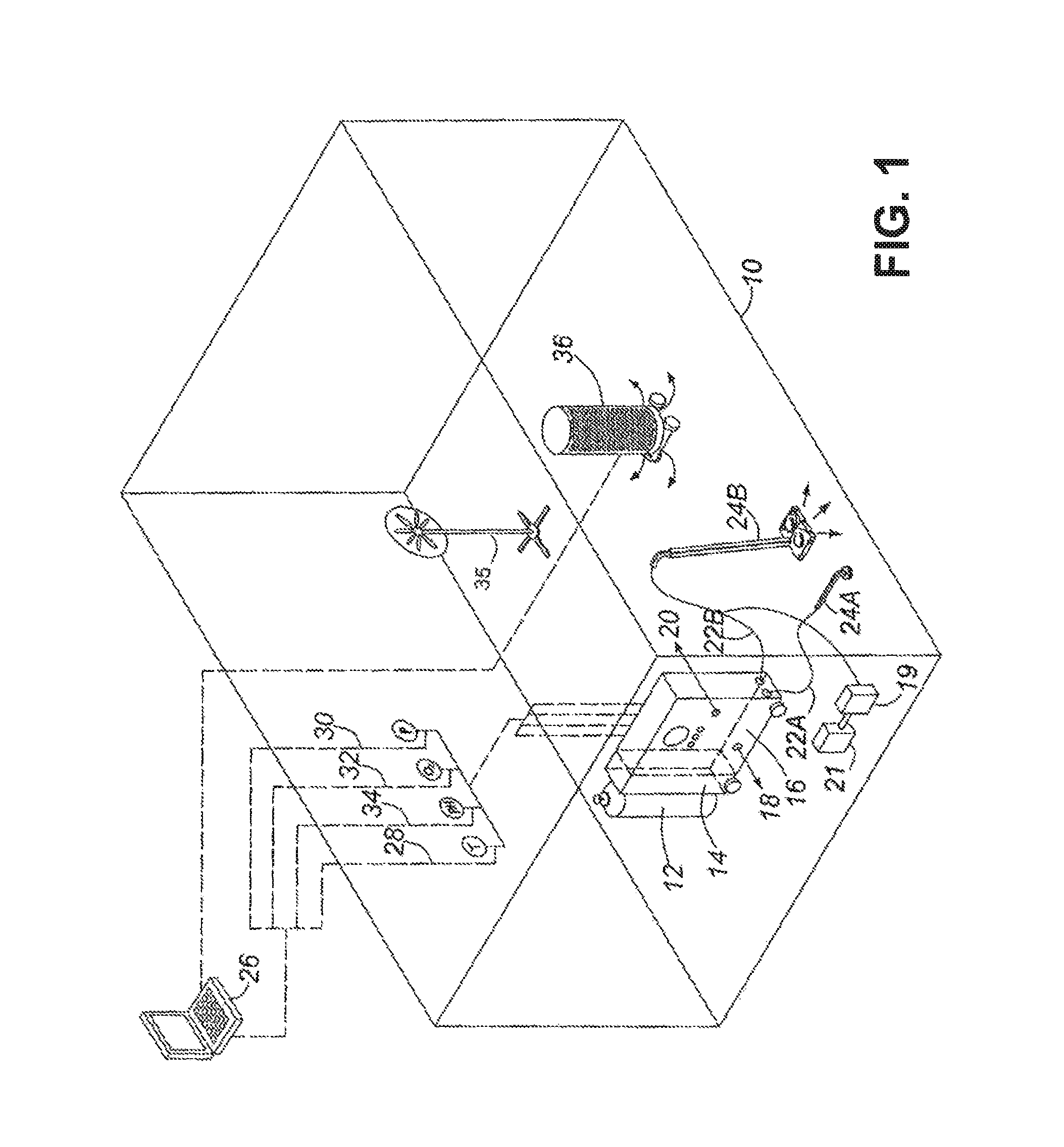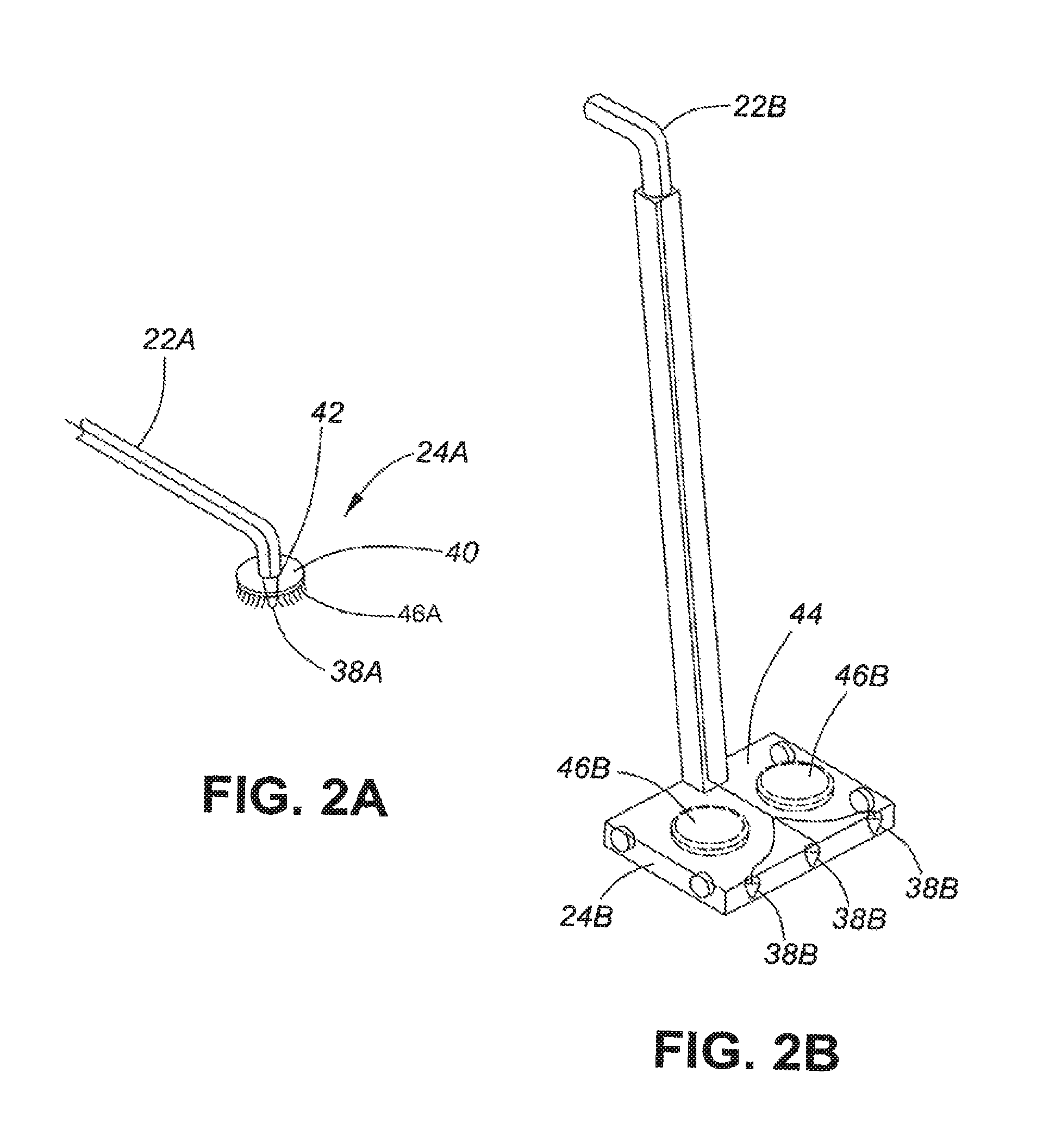Sports equipment and facility disinfection
a technology for sports equipment and disinfection treatments, applied in the direction of disinfection, water installations, construction, etc., can solve the problems of limited effectiveness against superbugs such as mrsa, and ineffective on porous materials and fabrics
- Summary
- Abstract
- Description
- Claims
- Application Information
AI Technical Summary
Benefits of technology
Problems solved by technology
Method used
Image
Examples
example 1
Control Swab
[0035]A swab was taken from the interior surface of an ice hockey goaltender's glove (blocker), which had been used by a 12-year old boy for three years. The swab was cultivated and tested, and the glove interior was found to be heavily contaminated with MRSA along with other, less deadly pathogens.
[0036]More specifically, a single pure colony of MRSA from the swab was inoculated to a Columbia agar plate with 5% sheep's blood. It was incubated at 35° C. in room air for 18-24 hours. From the plate, 4-5 isolated colonies were selected, and suspended in tryptic soy broth to achieve a 0.5 McFarland turbidity standard (1.5×108 cfu / ml) measured using a spectrophotometer. Inoculum was prepared by performing serial dilutions of 0.9 ml 0.85 NaCl broth with 0.1 ml of original 0.5 McFarland inoculum (4×10 fold) to give solutions of 10−1, 10−2, 10−3, and 10−4 cfu / mL. Incubation of these serially diluted solutions and subsequent counting of the resulting viable colonies determines th...
example 2
MRSA Control
[0039]A single pure colony of MRSA strain ATCC 33592 was inoculated and incubated as described in Example 1. Similar serial dilution of inoculums from 4-5 isolated colonies was conducted, followed by similar incubation and counting of reproducing colonies.
[0040]In this case, the reproducing colonies at 10−1 were too numerous to count. At dilutions 10−2, 10−3 and 10−4, the counts were 219, 39 and 4 respectively. This control experiment in comparison with Example 1 indicates that the wild strains of MRSA from athletic equipment are, if anything, more virulent than the standard, pure MRSA strain ATCC 33592.
example 3
[0041]The same ice hockey goaltender's glove as used in Example 1 was treated with ozone and hydrogen peroxide according to the invention, and then swabbed and tested for active reproducing MRSA as described.
[0042]An apparatus as diagrammatically illustrated in FIG. 4 was used. A chamber 100, closed while the experiment was in progress, contained near one end the hockey glove 102, supported in the chamber 100 with its open end 104 directed towards and disposed 2 feet from an electrical fan 106 with rotary blades 108. The chamber 100 was filled with a disinfecting atmosphere containing 180 ppm ozone and 3% hydrogen peroxide. The fan 106 blew the atmosphere weakly into the interior of the glove through opening 104. This was continued for 90 minutes. Then the chamber 100 was cleared of disinfecting atmosphere, the glove 102 removed, and a swab taken from its interior, inoculated, cultured and serially diluted as described in Example 1 above.
[0043]No viable colonies of MRSA were detecte...
PUM
| Property | Measurement | Unit |
|---|---|---|
| temperature | aaaaa | aaaaa |
| humidity | aaaaa | aaaaa |
| humidity | aaaaa | aaaaa |
Abstract
Description
Claims
Application Information
 Login to View More
Login to View More - R&D
- Intellectual Property
- Life Sciences
- Materials
- Tech Scout
- Unparalleled Data Quality
- Higher Quality Content
- 60% Fewer Hallucinations
Browse by: Latest US Patents, China's latest patents, Technical Efficacy Thesaurus, Application Domain, Technology Topic, Popular Technical Reports.
© 2025 PatSnap. All rights reserved.Legal|Privacy policy|Modern Slavery Act Transparency Statement|Sitemap|About US| Contact US: help@patsnap.com



